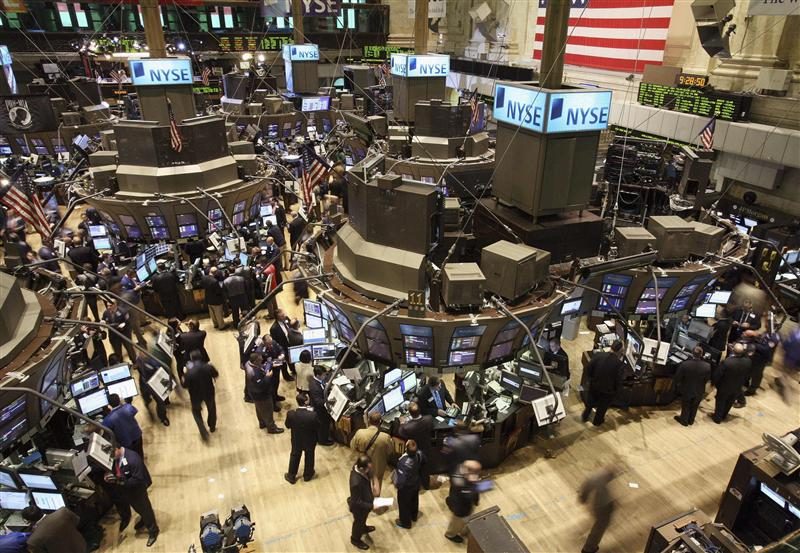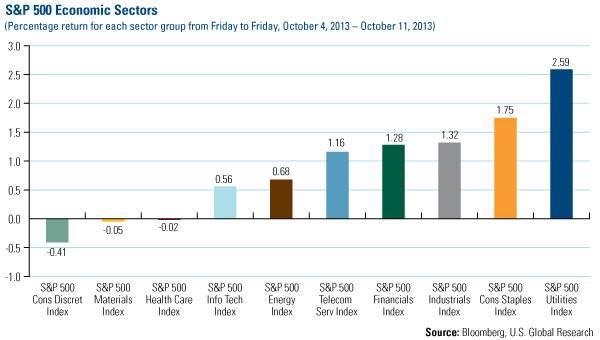U.S. Equity Market Radar (October 14, 2013)
The S&P 500 experienced quite a bit of volatility this week but ended the week higher on optimism that a solution would be found for the debt ceiling impasse. Defensive sectors led the way, with utilities and consumer staples outperforming, while cyclical areas tended to underperform.
Strengths
- The utilities sector was the best performer this week and every constituent in the group was higher for the week. The sector had underperformed in recent months and concern of a Treasury debt default pushed investors into relative safe havens.
- The consumer staples sector also rallied this week led by Safeway, which reported a lackluster quarter but the company announced it was exiting the Chicago market and selling stores. The company also indicated that other divestitures would be considered. The market reacted positively to these attempts to raise returns on capital.
- Darden Restaurants was the best performer in the S&P 500 this week rising 8.09 percent. An activist investor has taken a stake in the company and is pushing for a possible break up of the chain.
Weaknesses
- The consumer discretion sector was the worst performing group this week as retailers generally reported disappointing September results. L Brands and The Gap both fell by more than 9 percent on weak results. Internet related names were also weak such as Netflix, TripAdvisor and Priceline.com but have performed well recently.
- Materials also lagged and ended roughly flat for the week. Results were truly mixed with themes difficult to identify.
- Citrix Systems was the worst performer in the S&P 500 for the second week in a row, falling 16.17 percent. The company preannounced disappointing quarterly results which appear broad based and the company did not offer much clarity on the drivers behind the miss.
Opportunity
- The current macro environment remains positive as economic data remains robust enough to give investors confidence in an economic recovery but not too strong as to force the Fed to change course in the near term.
- Money flows are likely to find their way into domestic U.S. equities and out of bonds and emerging markets.
- The improving macro backdrop of Europe and China could be the next catalyst for the market to move higher.
Threat
- A market consolidation could occur in the near term after such a strong year.
- Higher interest rates are a threat for the whole economy. The Fed must walk a fine line and the potential for policy error is potentially large.
- The debt-ceiling debate has captured investor attention this week and potential missteps in Congress could create uncertainty and offer short-term oriented investors a reason to sell.















